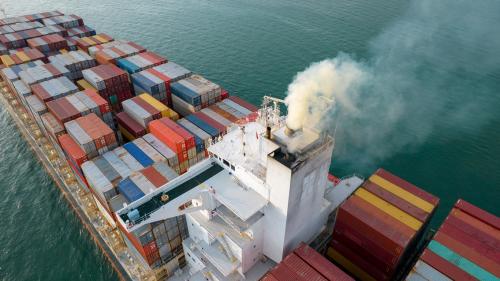The requirement to demonstrate operational carbon intensity reduction through the Carbon Intensity Indicator (CII) enters into force alongside the introduction of the Energy Efficiency Existing Ships Index (EEXI) in January 2023 and will have a profound impact on vessel operations in the years ahead, not least the marketability of vessels – CII will effectively provide a means for charterers to rank vessels.
That was one of the take aways from a recent webinar hosted by vessel inspections specialist IDWAL covering the fundamentals around the requirements of CII.
Although not the intended reason behind CII, it is clear that it would be a mistake to disregard the attained grade as a possible requirement for chartering. “The nature of these new regulations means that all emission information for vessels becomes significantly more public, and it’s likely the public will have a new or renewed interest in the emissions that have been produced to receive their goods,” stated IDWAL sales executive Ben Thomas.
What is CII?
Whereas EEXI is a measure of the energy efficiency of the technology and design of a vessel, CII is a measure of the vessel’s operational efficiency, or how efficiently it is being operated based on the amount of fuel consumed in a year. The units of the score are grams of CO2 per tonne nautical mile (gCO2/t.Nm) and measure the amount of CO2 created per unit of cargo carried a certain distance.
CII will assign all vessels above 5,000GT a performance band between A and E. As well as being the likely beneficiaries of positive green investment, ships in the higher performing bands of A and B may receive some incentives, such as reduced port fees. Band C represents the Required Annual Operational CII, and is essentially the acceptable baseline of the regulation. Vessels in the D and E bands will have to show annual improvement so as to move towards band C.
Ships that spend three consecutive years in band D, or one year in band E, will be subject to a mandatory plan of corrective actions that must be made to achieve the Required Annual Operational CII. The goal of IMO is to continually push vessels to keep improving their CII score and therefore reduce their carbon emissions.
IDWAL is currently conducting an analysis of over 3,000 bulk carriers, tankers, container vessels and general cargo vessels. Initial analysis of the bulk carriers shows that on their present trajectory, come next January 33% would sit in bands D or E, 30% would sit in band C and 37% in bands A or B, indicating that more than 30% of bulk carriers will require operational interventions to reduce and improve their CII score by 2023.
Reducing the score
So how can a vessel reduce its CII score? “A major part of CII compliance will be achieved through the reduction of the speed the vessels operate,” stated Steffan Henry, head of marine standards and IDWAL technical lead on sustainability initiatives.
However, there are a number of issues that companies will be thinking about when they consider slowing their fleet down. Primarily, this will be the reduction in tonne miles that vessels will be able to achieve and as such a reduction in the number of charters that a vessel will be able to undertake.
Other options listed by Henry included: a change to a less polluting fuel type; fuel measurement measures (such as the installation of a fuel mass flow meter to more accurately measure fuel consumption), social energy measures (e.g. turning off lights, reducing the air conditioning or heating, etc.); and engine room power management measures – all of which will have varying impacts on operational costs and the CII score.
Another challenge that ship owners face as they move to modernise their fleets could be current yard availability. “The reality of being able to install new technologies into older tonnage is that they will require major refit which will most likely mean dry docking, or at a minimum time out of the market, and as yard availability declines the price to modernise will significantly increase,” according to Thomas.
Regardless of the approach taken to comply with CII, the threat of potential sanctions, stakeholder pressure to be more sustainable and reputational damage for non-compliance are reasons to take it seriously.
The IDWAL webinar ‘What is CII?’ is available to watch at: https://www.youtube.com/watch?v=mRW8tqIp4z0




